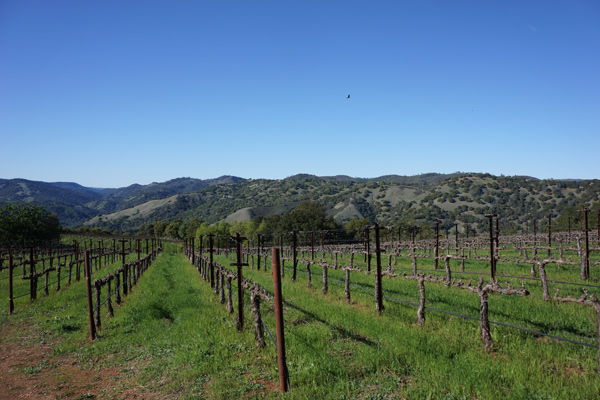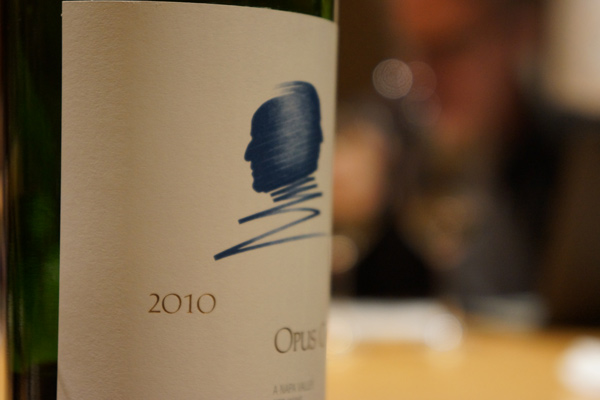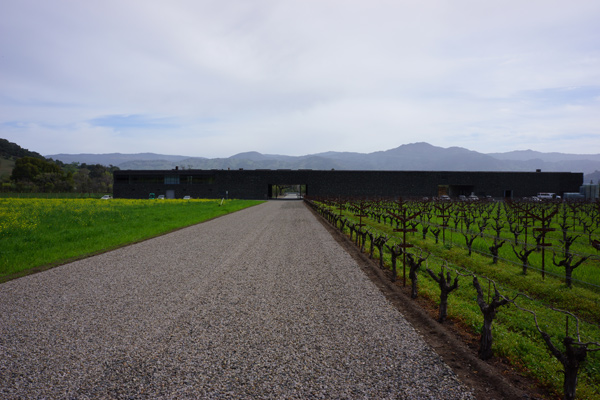Tasting Report: Napa Valley Cabs 2010, 2011 – Back to the Future
 Napa Valley may be coming back to its origins with its best cabernet sauvignon-based reds in 2010 and 2011 by focusing more on balance and tension than ripe fruit and concentration, and making altogether more interesting wines that emphasize their origins instead of desires of winemakers and marketers.
Napa Valley may be coming back to its origins with its best cabernet sauvignon-based reds in 2010 and 2011 by focusing more on balance and tension than ripe fruit and concentration, and making altogether more interesting wines that emphasize their origins instead of desires of winemakers and marketers.
I tasted more than 300 top cabernet and Bordeaux-blend reds from Napa in tastings in March in St. Helena and the valley, and I found dozens of superb wines -- two perfect 100 pointers -- that showed a beautiful purity of fruit and structure that reminded me of some of the classic wines I loved in the 1980s such as the 1974 Beaulieu Vineyard BV Georges de Latour Private Reserve Cabernet Sauvignon and the 1968 Heitz Cellar Martha's Vineyard Cabernet Sauvignon. I have drunk both recently and they show amazing depth, complex character, and freshness.
 The best reds I tasted in March showed much less overripe, sometimes raisin character that dominated the style of cabernet-based reds from Napa Valley for the last two decades. Therefore, the wines were more aromatic and fresh with firmer tannins and crisper finishes. They were simply more drinkable than blockbuster wines that win some tastings but lose at the dinner table.
The best reds I tasted in March showed much less overripe, sometimes raisin character that dominated the style of cabernet-based reds from Napa Valley for the last two decades. Therefore, the wines were more aromatic and fresh with firmer tannins and crisper finishes. They were simply more drinkable than blockbuster wines that win some tastings but lose at the dinner table.
Moreover, with the more balanced 2010s and 2011s it was easier to decipher a unique character with many of the wines, whether the mineral, stony undertones of one from mountain vineyards or the dusty, round texture of another from vines on the valley floor. This makes for much more interesting drinking. And most are drinkable now but will improve with bottle age.
This apparent change comes from primarily picking grapes that were slightly less ripe in 2010 and 2011. Both vintages were cooler and wetter than recent vintages, and many winemakers had no choice but to harvest grapes at lower potential alcohol levels. However, some winemakers are intentionally cutting back their high-octane tendencies in hopes of making wine more interesting.
 I was very happy to hear during my weeklong trip to Napa so many winemakers talking about a "sense of place" instead of boasting about the potential alcohol levels of their grapes during the harvest. "There is a concerted effort to dial back and get away from prune and raisin character for altogether more interesting wines," said Tor Kenward, a small production winemaker making hand-made red from some of the best vineyards in the valley.
I was very happy to hear during my weeklong trip to Napa so many winemakers talking about a "sense of place" instead of boasting about the potential alcohol levels of their grapes during the harvest. "There is a concerted effort to dial back and get away from prune and raisin character for altogether more interesting wines," said Tor Kenward, a small production winemaker making hand-made red from some of the best vineyards in the valley.
In fact, my team in Napa, which included my wife and two tasting coordinators, couldn't get over how many reds we tasted that were so approachable and drinkable, instead of past experiences with overripe and high-alcohol wines that were impressive for wine tastings but very difficult to drink during meals. I found very few wines in my tasting that exhibited what top Australian winemakers and tasters call "dead fruit character," meaning raisin and dried fruit aromas and flavors and burning alcohol at the finish.
Long may this renewed Napa style of balance, purity and drinkability last.
As one winemaker said during a tasting of his 2010: "The 2010 and 2011 vintages gave winemakers the confidence to find their sense of place. It helped them to believe that, 'Yes we can do this! We can make wines like this!'"